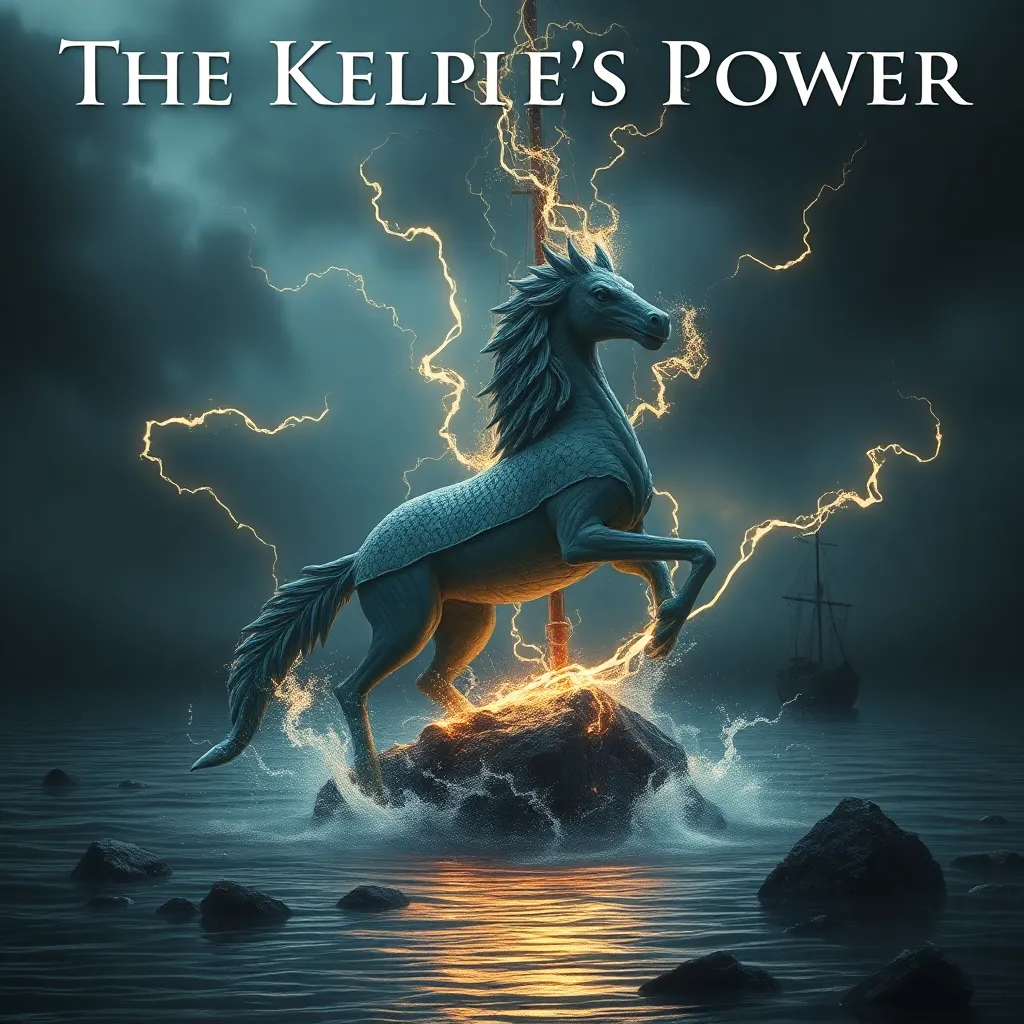The Kelpie’s Power: Exploring the Myth’s Role in Defining Power and Control
I. Introduction
The Kelpie, a mythical creature from Scottish folklore, is often depicted as a water spirit that can take the form of a horse. This enigmatic being has captured the imagination of many, serving as a potent symbol in the cultural landscape of Scotland. Myths like that of the Kelpie are essential in understanding the complexities of power and control in human relationships and society at large.
This article aims to delve into the origins, characteristics, and significance of the Kelpie myth, exploring how it reflects our perceptions of power dynamics and control. By examining the Kelpie’s role in folklore, we can gain insights into the human experience and the narratives that shape our understanding of authority and influence.
II. The Origin of the Kelpie Myth
A. Historical context and geographical roots
The Kelpie myth has its roots in the rich tapestry of Scottish folklore, particularly in regions near lochs and rivers. The term “Kelpie” is believed to have originated from the Gaelic word “cailpeach,” meaning “heifer” or “young cow,” which hints at the creature’s connection to water and livestock.
B. Evolution of the Kelpie in folklore
Over the centuries, the Kelpie has evolved from a simple water spirit to a more complex figure embodying both beauty and peril. Initially portrayed as a benign guardian of water, the Kelpie gradually transformed into a malevolent force, luring unsuspecting victims to their doom. This evolution reflects changing societal values and fears regarding nature and the unknown.
C. Significance of water as a symbol in mythology
Water is often seen as a symbol of life, purification, and transformation in various mythologies. In the case of the Kelpie, water represents both allure and danger. The Kelpie’s habitat in lakes and rivers underscores the duality of water as both a source of sustenance and a potential threat, mirroring the complexities of power and control in human interactions.
III. Characteristics of the Kelpie
A. Physical descriptions and transformations
The Kelpie is primarily described as a splendid black horse, often with a flowing mane and glowing eyes. However, its true nature is revealed when it lures victims close enough to reveal its aquatic form, which is often depicted as a slimy, grotesque creature. This ability to transform serves as a metaphor for the deceptive nature of power.
B. Behavioral traits and motivations
Kelpies are known for their cunning and charm, using their beauty to attract travelers, particularly those who are weary or lost. Their motivations often revolve around a desire for revenge against humanity for encroaching upon their watery domains. This portrayal highlights themes of retribution and the consequences of human actions on the natural world.
C. The duality of allure and danger
The Kelpie embodies a striking duality: it is both enchanting and treacherous. This duality reflects the complexities of power dynamics, where individuals or forces may appear inviting yet hide dangerous intentions beneath the surface. The Kelpie’s ability to seduce and ensnare is a cautionary tale about the nature of influence and control.
IV. The Kelpie as a Symbol of Power
A. Representation of natural forces and uncontrollable elements
The Kelpie symbolizes the raw power of nature, representing forces that are beyond human control. This association with natural elements emphasizes humanity’s vulnerability in the face of overwhelming power.
B. The Kelpie’s role in local power dynamics
In local folklore, Kelpies often serve as reflections of community fears and the struggles for power within societal structures. Their stories reveal how individuals use cunning and manipulation to navigate challenges and assert dominance.
C. Connection between myth and societal hierarchies
The Kelpie myth highlights the interconnectedness between nature and societal hierarchies. It serves as a reminder that power is not just held by individuals but is also influenced by external forces. The narrative encourages a critical examination of authority and the various ways it manifests in society.
V. Control and Manipulation in the Kelpie Legend
A. Themes of seduction and deception
The Kelpie’s legend is rife with themes of seduction and deception, illustrating how power can be exercised through manipulation. The creature’s ability to charm its victims serves as a metaphor for how individuals may exploit vulnerability in relationships.
B. The consequences of losing control to the Kelpie
Victims of the Kelpie often face dire consequences, such as drowning or being trapped in the creature’s watery realm. This reflects the dangers of relinquishing control and the high stakes involved in power struggles.
C. Lessons on power dynamics in human relationships
The interactions between Kelpies and their victims offer valuable lessons in power dynamics. The myth serves as a warning about the potential for exploitation in relationships, urging individuals to remain vigilant and discerning in the face of alluring promises.
VI. Modern Interpretations of the Kelpie Myth
A. Contemporary adaptations in literature and media
In recent years, the Kelpie has been reimagined in various forms of literature and media, often depicted as a more complex character. These adaptations explore themes of identity, transformation, and the struggle for power in modern society.
B. The Kelpie’s relevance in discussions about power today
The Kelpie retains its relevance in contemporary discussions about power, particularly in relation to environmental issues and the balance between humanity and nature. The myth encourages dialogue about accountability and the consequences of our actions on the natural world.
C. Comparisons with other mythological figures
Comparing the Kelpie with other mythological figures, such as mermaids or sirens, reveals common themes of seduction and danger. Each of these figures serves as a reflection of societal fears and desires, emphasizing the universal struggle for power and control.
VII. Cultural Reflections: The Kelpie and Society
A. How the Kelpie myth informs cultural attitudes towards authority
The Kelpie myth has significantly influenced cultural attitudes towards authority and the relationship between humans and nature. It serves as a cautionary tale about the dangers of overstepping boundaries and the need for respect in the face of powerful forces.
B. The role of storytelling in shaping perceptions of power
Storytelling plays a crucial role in shaping societal perceptions of power. Myths like the Kelpie create narratives that encourage reflection on authority, control, and the complexities of human relationships.
C. The Kelpie’s influence on community values and norms
The lessons embedded in the Kelpie myth continue to resonate within communities, influencing values such as respect for nature, awareness of manipulation, and the importance of maintaining control in relationships.
VIII. Conclusion
In conclusion, the Kelpie serves as a powerful symbol in understanding the dynamics of power and control. Through its rich history and complex characteristics, the Kelpie myth offers profound insights into human nature and societal structures. As we continue to explore mythological narratives, we uncover the timeless themes that resonate across cultures and generations, inviting us to reflect on our own relationships with power and authority.
Ultimately, the enduring impact of myths like that of the Kelpie encourages us to delve deeper into our cultural narratives, seeking wisdom and understanding in the stories that have shaped our world.



